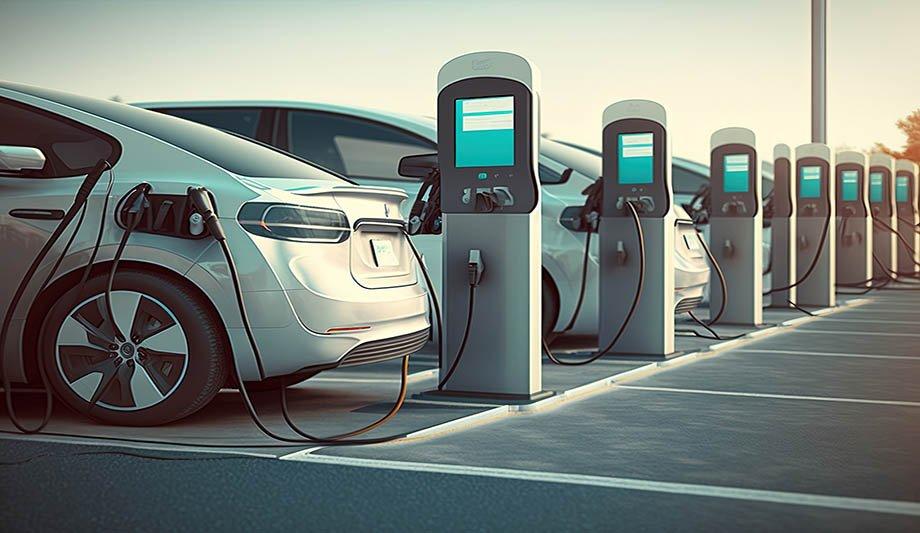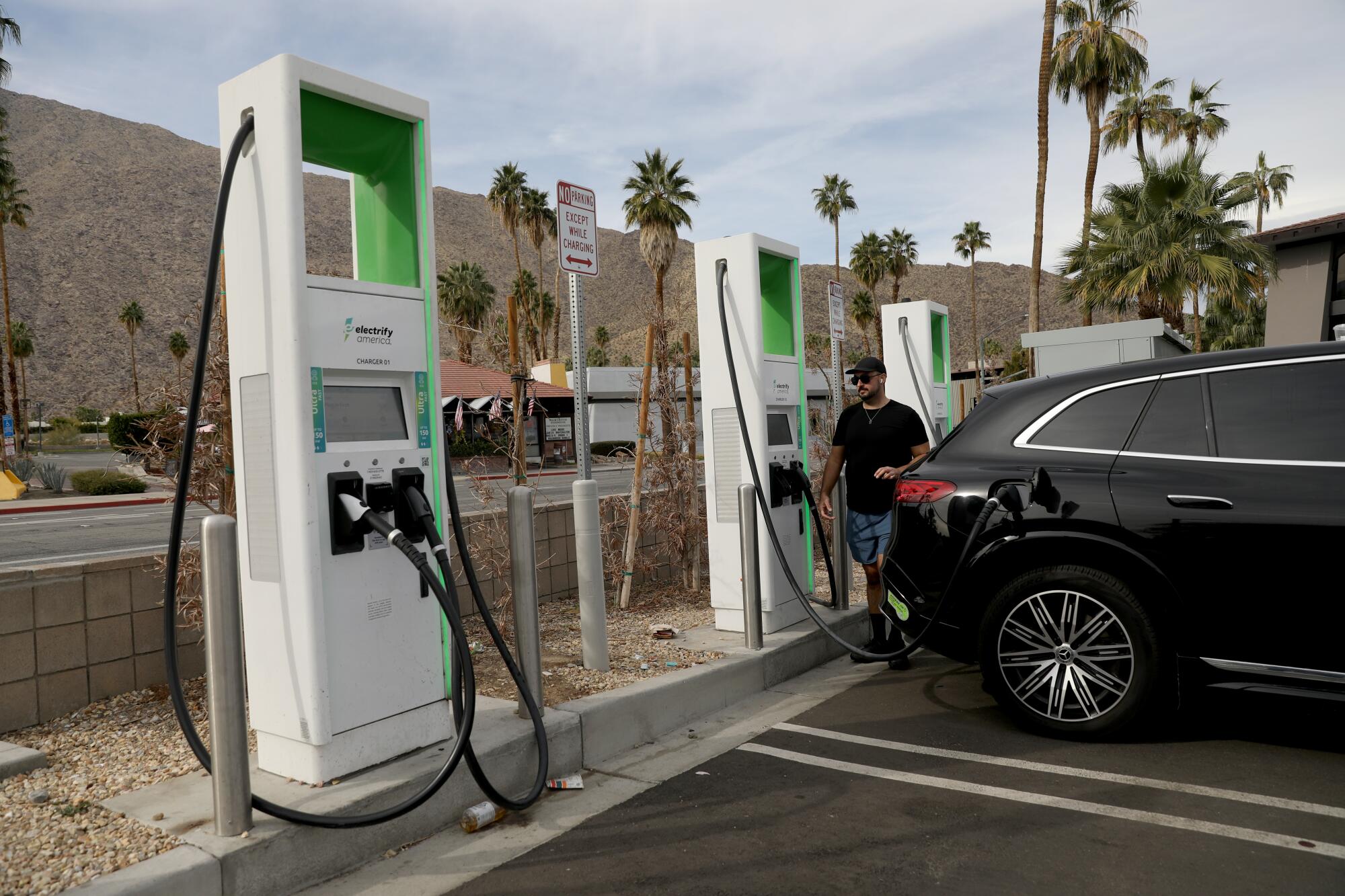What’s Driving the Growth of EV Infrastructure? Buy EV Charging news for Key Updates
What’s Driving the Growth of EV Infrastructure? Buy EV Charging news for Key Updates
Blog Article
Top EV Charging Information: Key Updates on Infrastructure and Innovation

Current Innovations in Fast-Charging Innovation

Furthermore, advancements in battery modern technology, consisting of boosted thermal administration systems and greater power thickness batteries, complement fast-charging abilities. These developments alleviate the threat of battery destruction during fast charging, making sure durability and performance for EV proprietors.
In addition, the integration of smart billing options is boosting individual experience, making it possible for real-time tracking and dynamic prices designs. EV Charging news. This versatility enables drivers to optimize charging prices and times based upon grid demand
As car manufacturers remain to buy fast-charging networks, the partnership in between industry stakeholders is critical. Collaborations in between billing terminal service providers and automobile manufacturers are paving the means for comprehensive coverage, ultimately promoting a more robust EV ecological community. These advancements are pivotal in sustaining the change to lasting transport.
Government Initiatives for Billing Growth
Government initiatives play an important duty in the development of electrical lorry (EV) charging infrastructure, facilitating the shift to lasting transportation. Different government and state programs are being executed to enhance charging ease of access, reduce the financial burden on customers, and promote the fostering of electrical cars.
Notably, the U.S. federal government has actually allocated significant funding via the Facilities Investment and Jobs Act, which earmarks $7.5 billion for EV billing network growth throughout the nation. This funding is targeted at releasing countless brand-new charging stations, specifically in underserved locations, therefore attending to range stress and anxiety among potential EV customers.
In addition, countless states are passing regulations to improve the permitting procedure for charging terminal installations, which is vital for increasing deployment. Motivations such as tax credit reports and rebates for both customers and organizations are likewise being introduced to motivate the setup of charging framework.
Moreover, public-private collaborations are increasingly coming to be a focus, leveraging personal investment to match federal government financing. These campaigns underscore a collective technique necessary for building a reliable and extensive EV charging network, inevitably contributing to a greener and more lasting future.
Ingenious Battery Solutions Enhancing Performance
Transforming the landscape of electric automobile (EV) innovation, cutting-edge battery remedies are dramatically boosting effectiveness and efficiency. Developments in battery chemistry, particularly with lithium-sulfur and solid-state batteries, are leading to enhanced power density, which enables longer arrays and faster billing times. These brand-new battery kinds have the prospective to outshine standard lithium-ion batteries by offering higher abilities while minimizing weight, thereby boosting overall lorry performance.
Moreover, advancements in battery administration systems (BMS) are optimizing power usage and read review extending battery life expectancy. Smart algorithms check battery health and wellness and performance, allowing real-time modifications to charging and check releasing procedures. This not only improves the effectiveness of the battery yet likewise makes certain a more dependable and sustainable energy resource for EVs.
Furthermore, the assimilation of reusing modern technologies is resolving the environmental influence of battery production and disposal. Developments in second-life applications for EV batteries are promoting their use in energy storage systems, adding to a circular economy.
As these cutting-edge battery options remain to develop, they promise to change the EV market, making electric vehicles much more obtainable and enticing to a more comprehensive audience while sustaining international sustainability objectives.
Cooperation In Between Automakers and Charging Networks
Identifying the crucial demand for a robust billing facilities, automakers are progressively working together with billing network companies to enhance the EV ownership experience (EV Charging news). These partnerships aim to create a seamless charging ecological community that benefits customers and supports the transition to electrical lorries
Significant automotive brand names are signing up with pressures with well-known charging networks to increase their charging terminal insurance coverage, ensuring vehicle drivers have access to practical and reliable billing choices. Collaborations with networks like ChargePoint and Electrify America enable automakers to incorporate charging remedies straight right into their vehicles' navigating systems, directing individuals to the closest terminals and supplying real-time availability updates.
Moreover, these cooperations typically result in the development of fast-charging modern technologies that significantly decrease the moment needed to reenergize an EV. By merging sources and know-how, car manufacturers and billing networks can introduce quicker, producing remedies that meet the expanding demand for electric mobility.
Additionally, joint efforts may likewise lead to even more standard billing protocols, which can relieve consumer complication and advertise broader EV adoption. In general, these critical alliances are critical in building a efficient and easy to use billing infrastructure that meets the requirements of an expanding electrical automobile market.
Obstacles Facing EV Charging Infrastructure
As the electrical car market remains to grow, a number of obstacles are surfacing that prevent the development of an extensive charging infrastructure. Among the main barriers is the inadequate variety of charging stations, especially in underserved and country urban areas. This gap produces array anxiety amongst potential EV dig this purchasers, discouraging them from making the button.
Furthermore, the lack of standardization in billing modern technology complicates the framework landscape. Variants in plug kinds and charging rates can produce complication for individuals and boost functional intricacies for billing network operators. In addition, the combination of billing terminals into existing electric grids poses substantial obstacles. Several regions deal with capability constraints, needing significant financial investments in grid upgrades to fit boosted need.
Another pressing problem is the high cost connected with the setup and maintenance of charging stations, which can be a barrier for both exclusive services and public entities. Regulatory difficulties and zoning restrictions can delay the deployment of billing infrastructure, hindering development in increasing important solutions. Attending to these difficulties will certainly be critical for cultivating a durable EV ecosystem that supports the change to lasting transportation.
Verdict
To conclude, the recurring improvements in EV billing modern technology, supported by considerable government campaigns and cutting-edge battery solutions, are important for the expansion and performance of electrical vehicle infrastructure. Collaborations in between car manufacturers and charging suppliers additionally enhance station insurance coverage, attending to the expanding demand for available charging alternatives. Despite difficulties that linger within the EV charging landscape, these developments signify a favorable trajectory towards a much more sustainable and reliable electric automobile environment.
Technologies in charging facilities have actually led to the advancement of ultra-fast chargers capable of providing up to 350 kW of power, considerably decreasing charging times. Variations in plug kinds and charging speeds can create complication for users and raise operational intricacies for charging network drivers.In conclusion, the recurring innovations in EV charging modern technology, sustained by substantial federal government initiatives and innovative battery services, are vital for the development and performance of electrical automobile framework. Cooperations between car manufacturers and charging companies better enhance terminal coverage, attending to the growing demand for available charging alternatives. In spite of difficulties that persist within the EV billing landscape, these developments signify a favorable trajectory in the direction of an extra reliable and lasting electric lorry environment.
Report this page